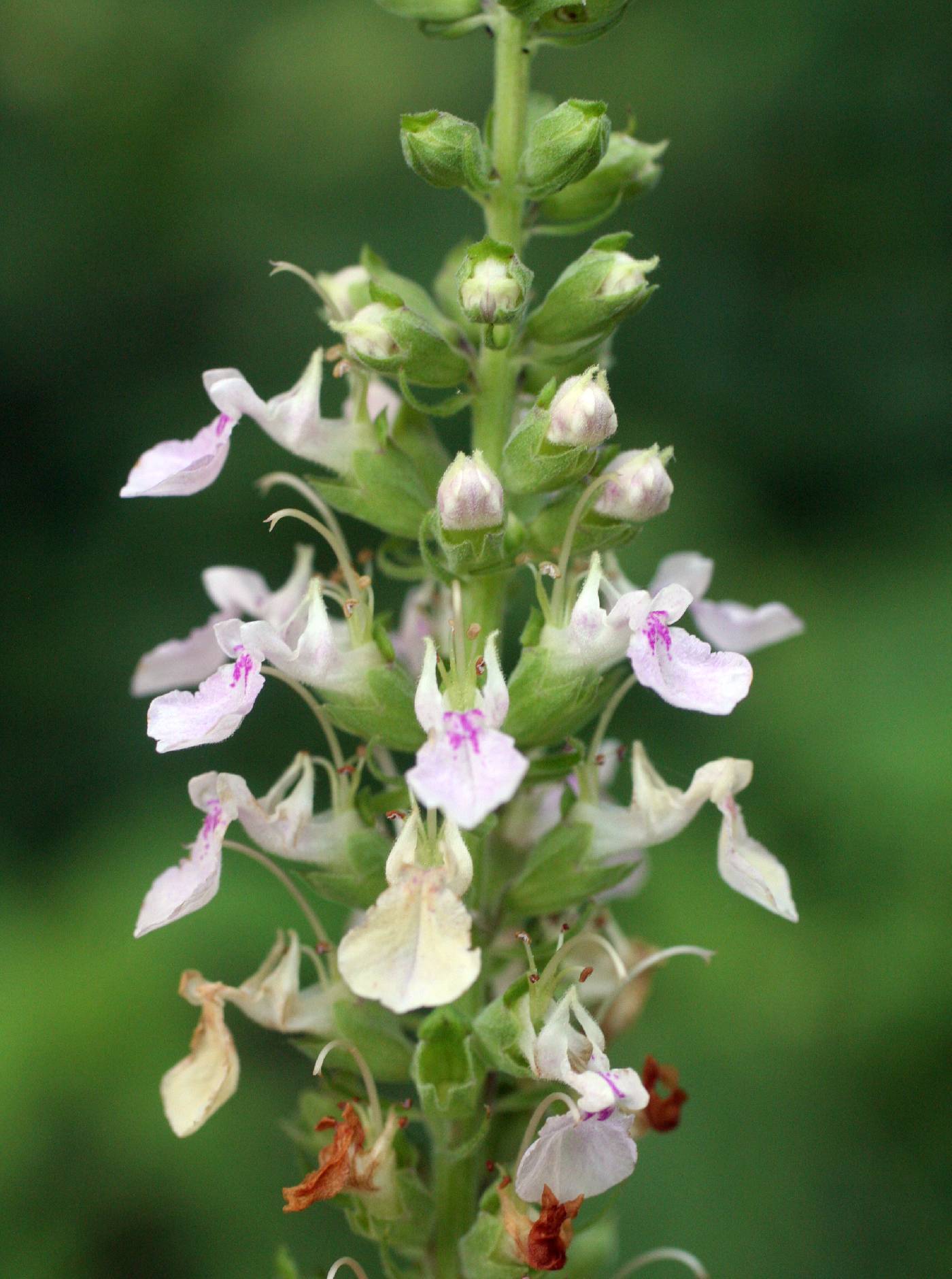
|
Family: Lamiaceae |
PLANT: Annual or perennial taprooted or rhizomatous herbs, glabrous to pubescent; stems erect or ascending, simple or variously branched. LEAVES: petiolate; blades ovate, oblong, elliptic, or lanceolate; margins deeply lobed to serrate or crenate. INFLORESCENCE: racemose; bracts leafy or reduced. FLOWERS: pedicellate; calyx actinomorphic or zygomorphic, enlarging slightly in fruit, the teeth or lobes with acuminate apices; corolla zygomorphic, 5 lobed, not bilabiate due to deeply lobed upper lip, the tube included or slightly exserted; stamens 4, exserted, the anther sacs strongly divaricate with none abortive; ovary sessile, lobed in upper 2 2/3; stigma mostly evenly 2 lobed. NUTLETS: obovoid, pubescent or glabrous, roughened. x = 5, 8, 13. NOTES: Ca. 300 spp., temperate areas world wide. (Name from Dioscorides, apparently for Teucer, the first King of Troy). The commonly cultivated germander, T. chamaedrys L., has a history of medicinal usage. McClintock, E., and C. Epling. 1946. Brittonia 5:491 510. REFERENCES: Christy, Charlotte M. 2003. Lamiaceae. J. Ariz. - Nev. Acad. Sci. Volume 35(2). Cal campanulate, 10-nerved, slightly oblique at the throat, with 5 scarcely to evidently unequal teeth; cor seemingly 1-lipped, the upper lip represented only by its 2 lobes, which are separated and displaced so as to arise from the lateral margins of the well developed, declined, otherwise 3-lobed lower lip, of which the central lobe is much the largest; stamens 4, exserted, the lower pair the longer; ovary merely 4-lobed, the style terminal, the nutlets laterally attached and almost completely united. 100, cosmop. Gleason, Henry A. & Cronquist, Arthur J. 1991. Manual of vascular plants of northeastern United States and adjacent Canada. lxxv + 910 pp. ©The New York Botanical Garden. All rights reserved. Used by permission. |
This project was made possible in part by the Institute of Museum and Library Services [MG-70-19-0057-19].
Powered by Symbiota



